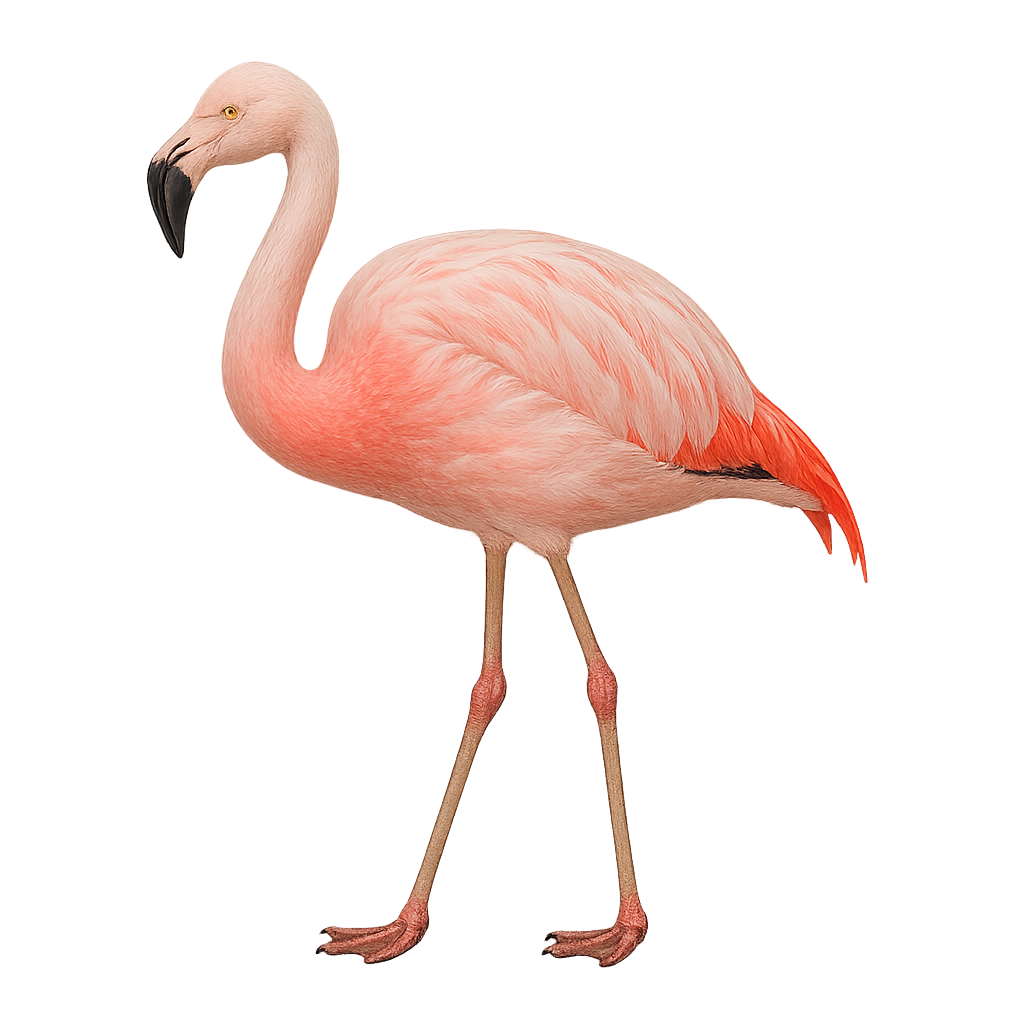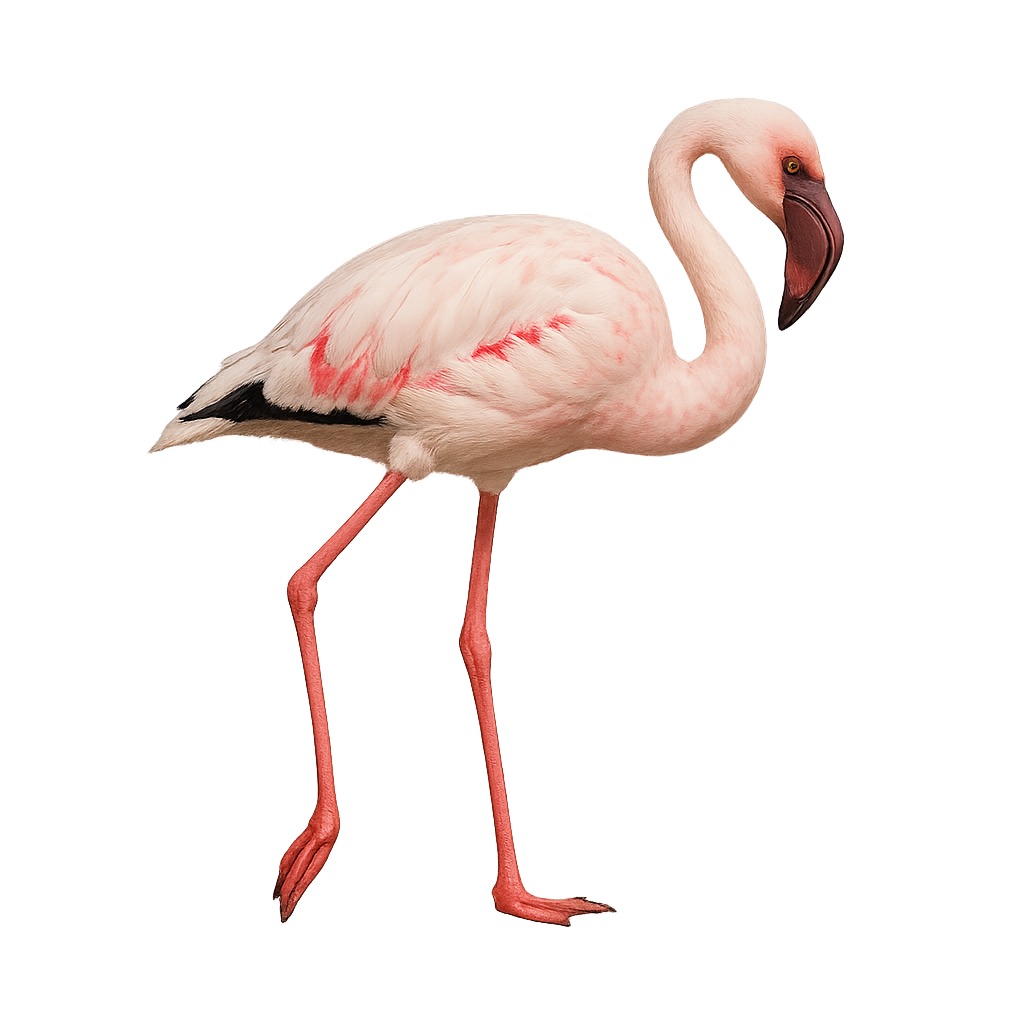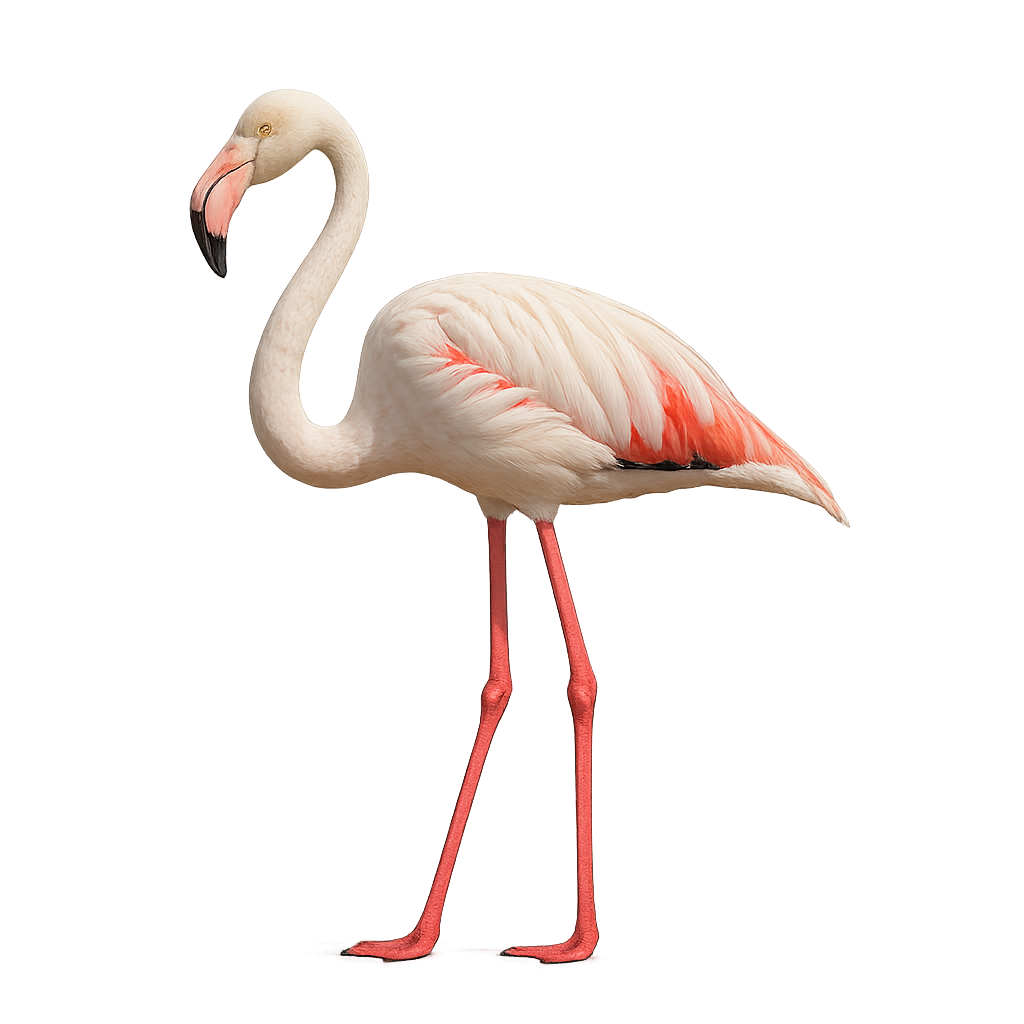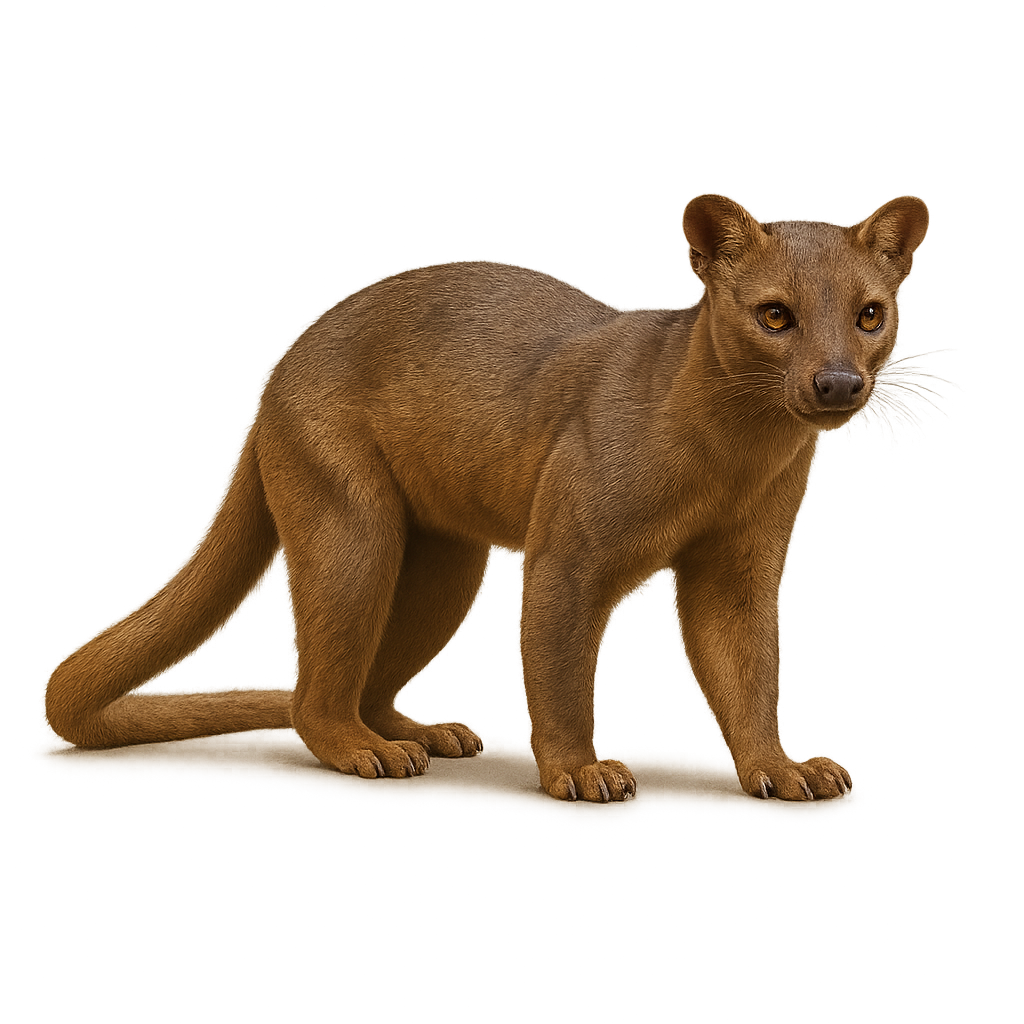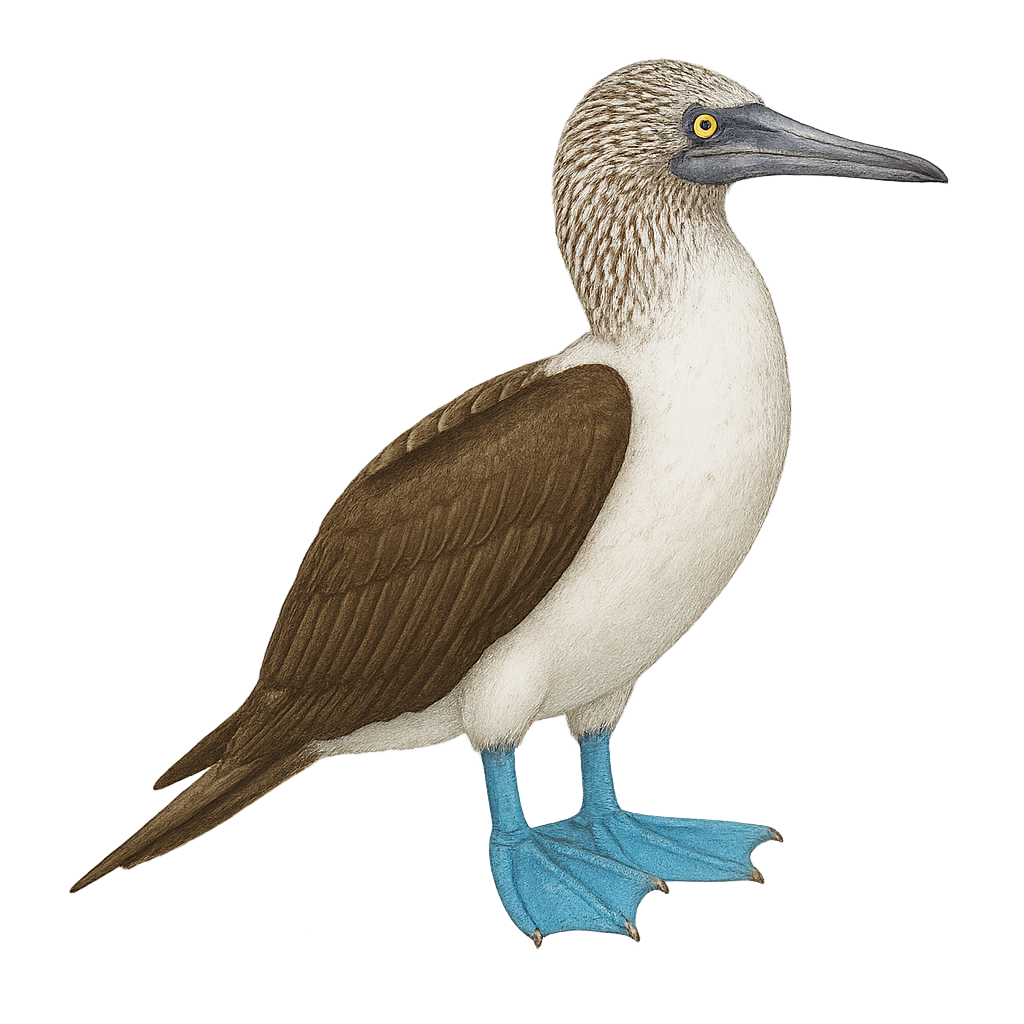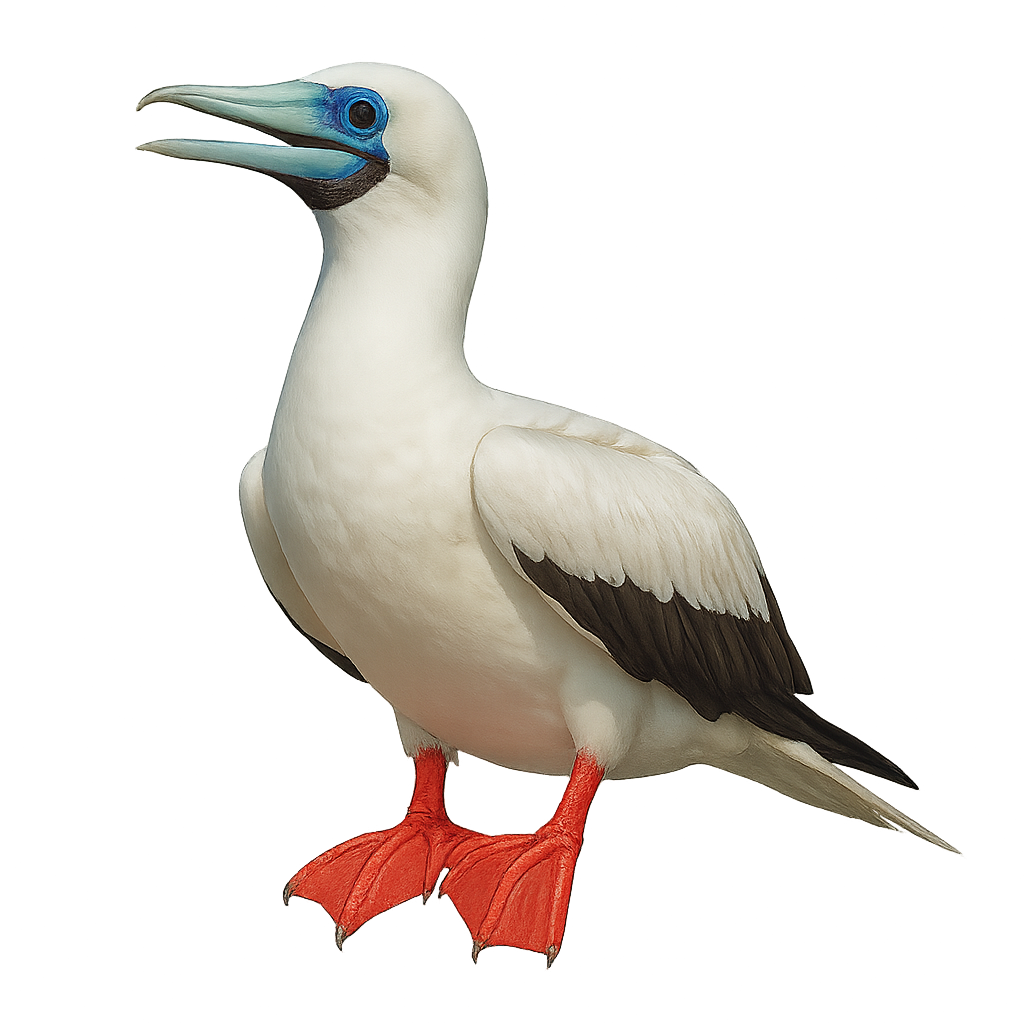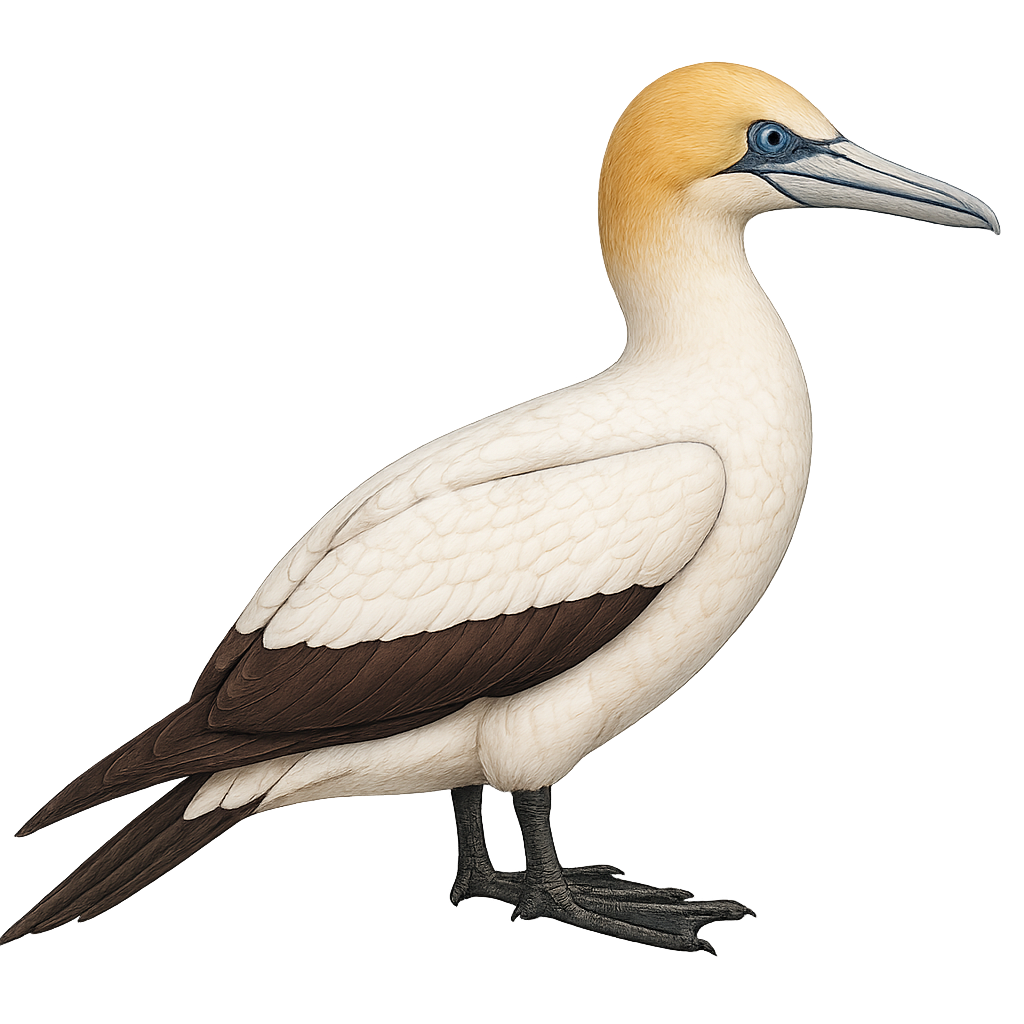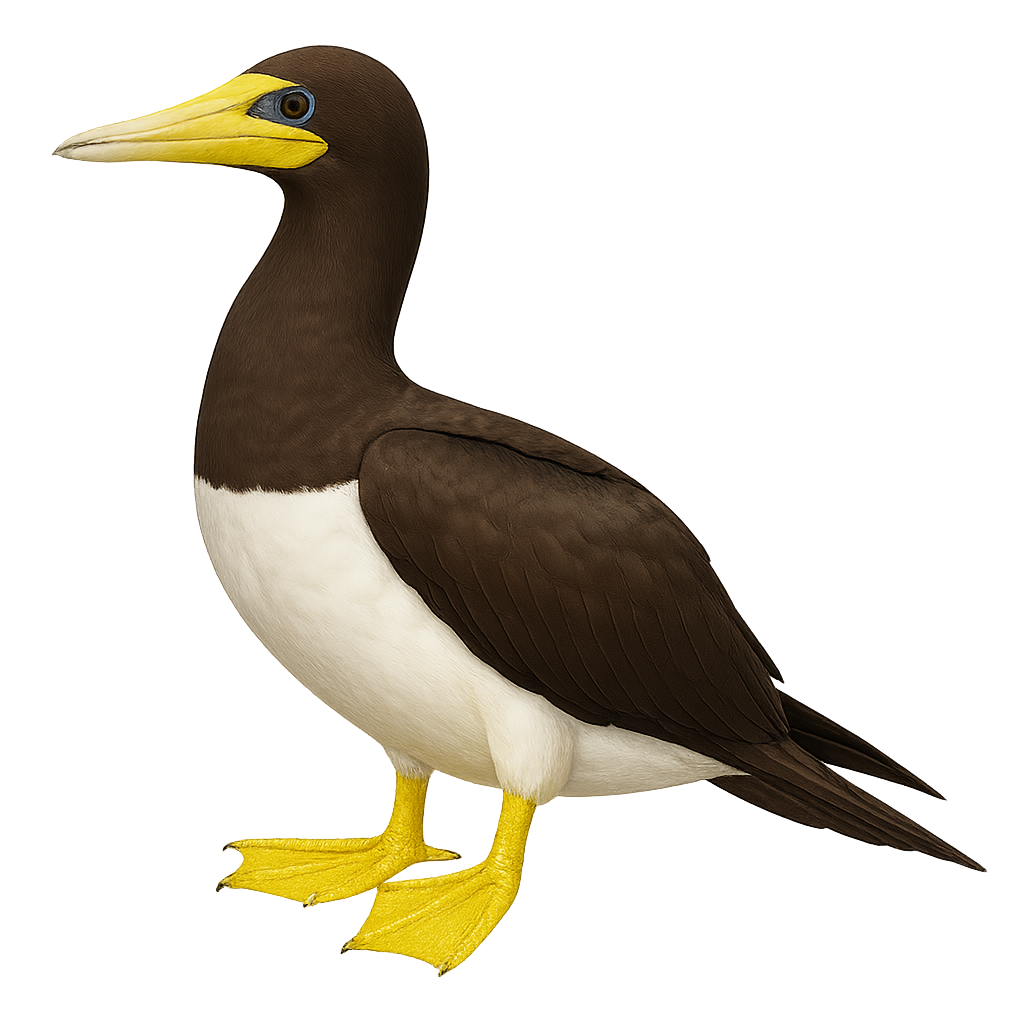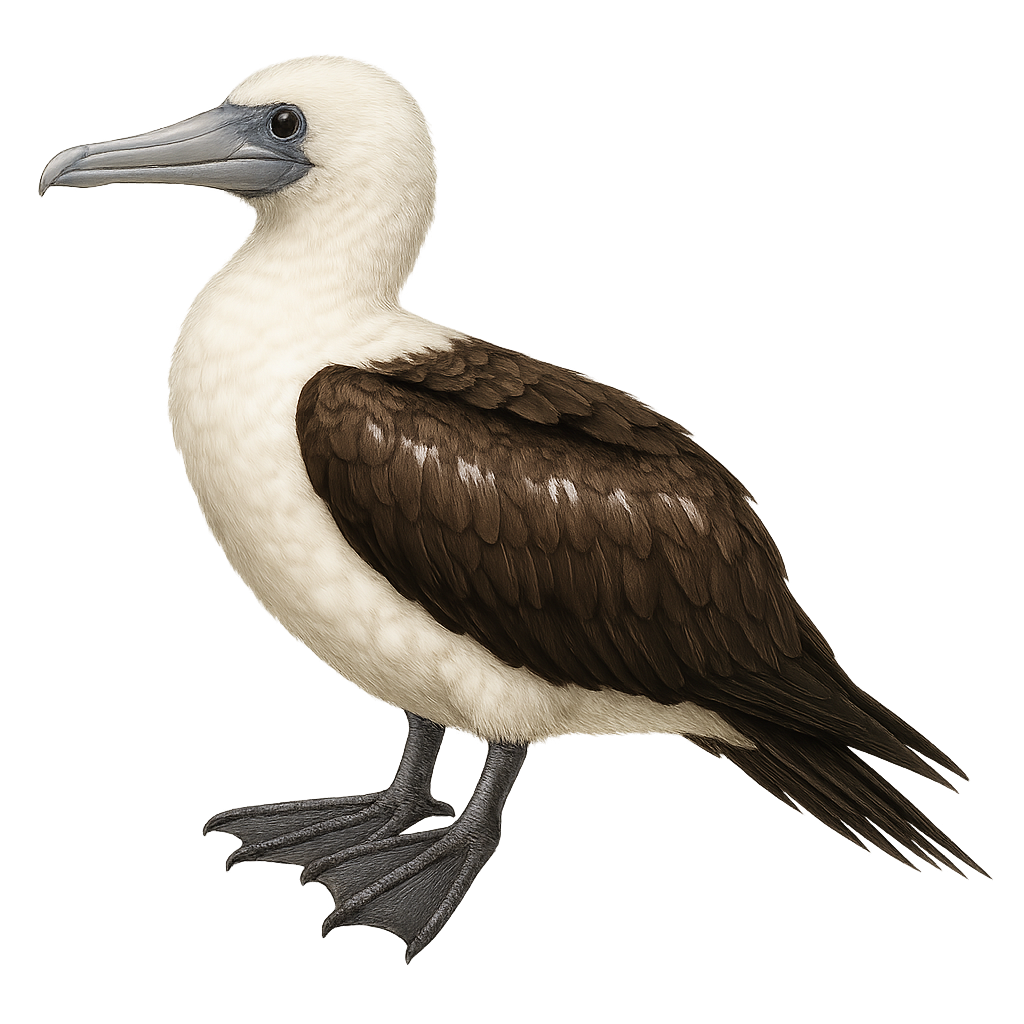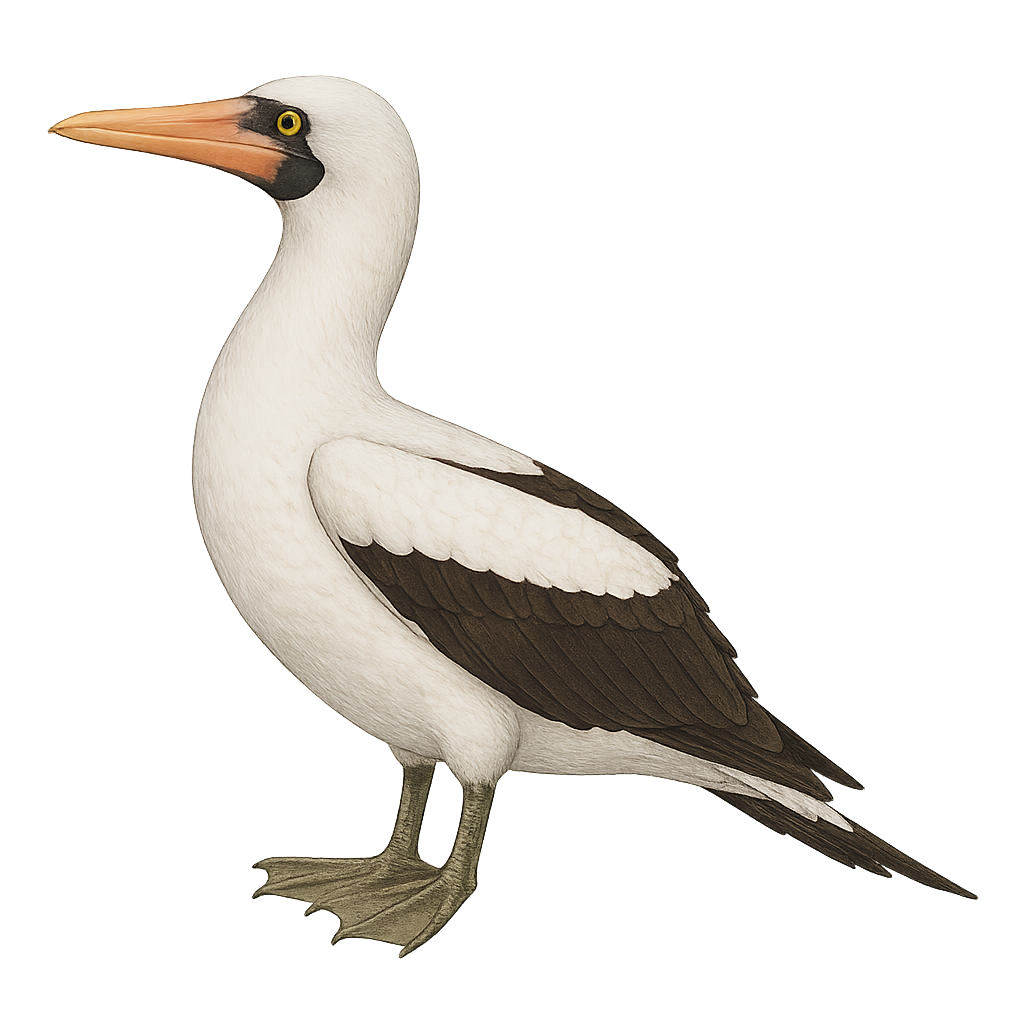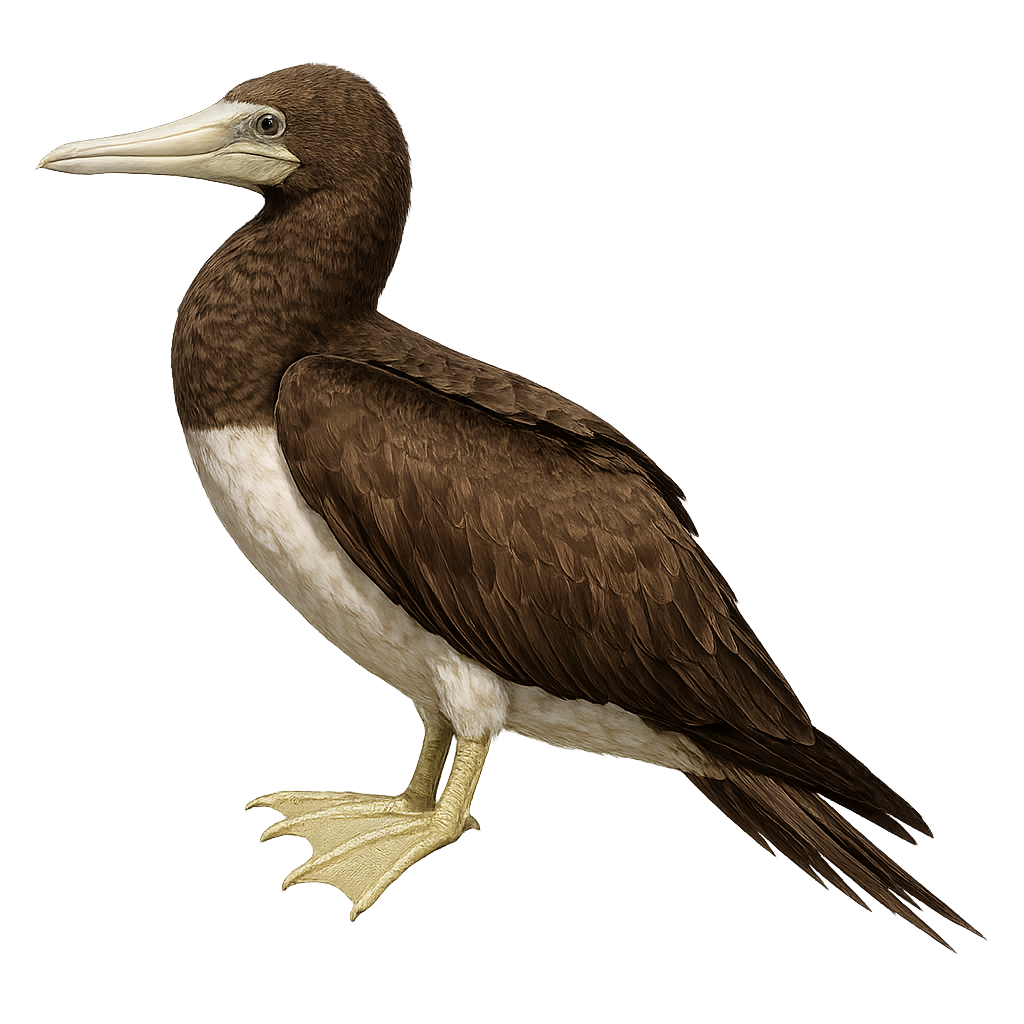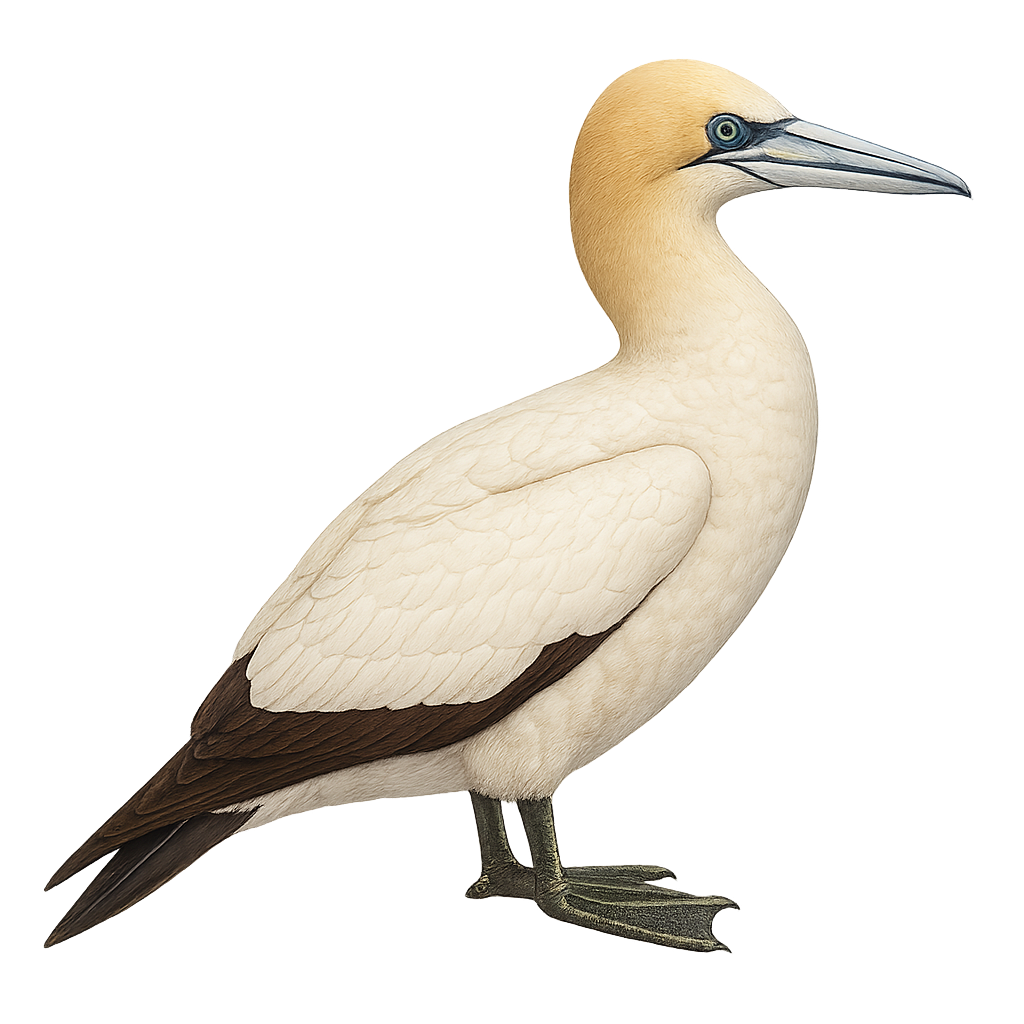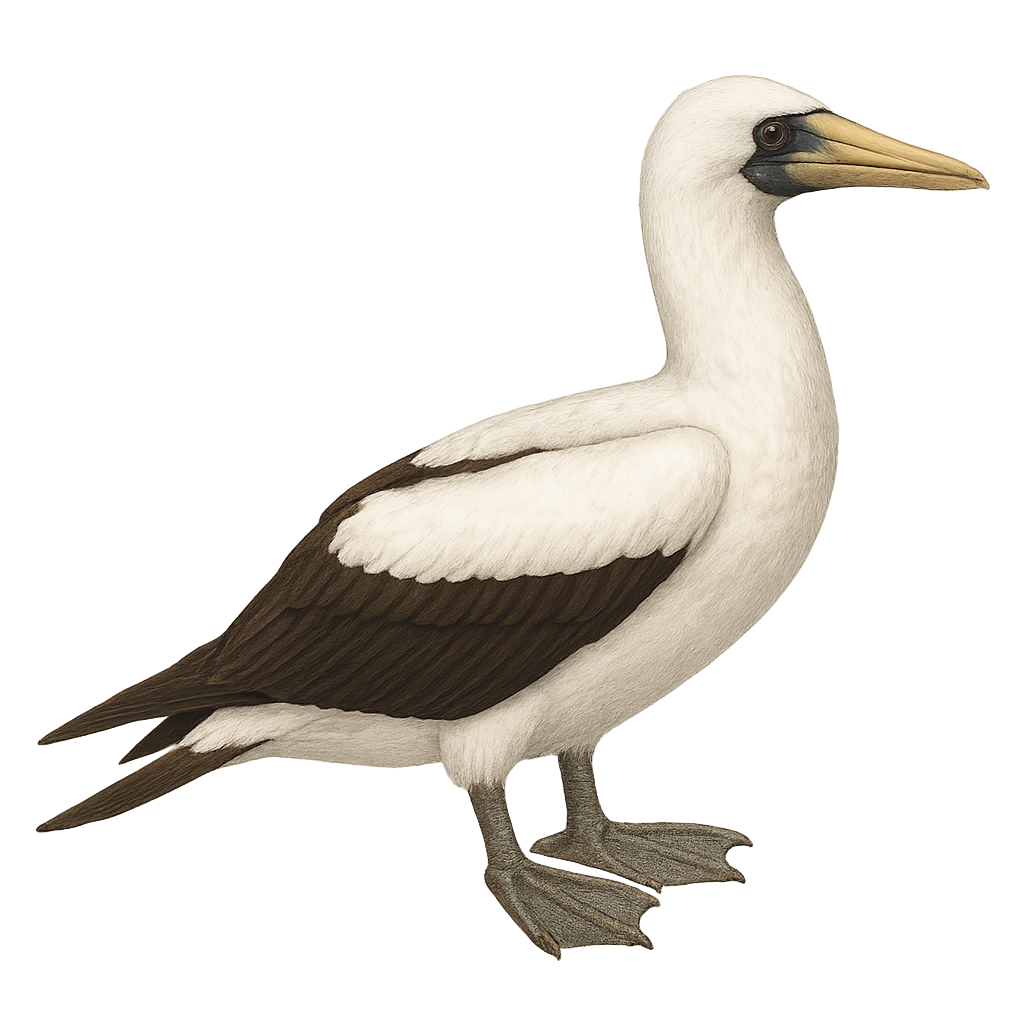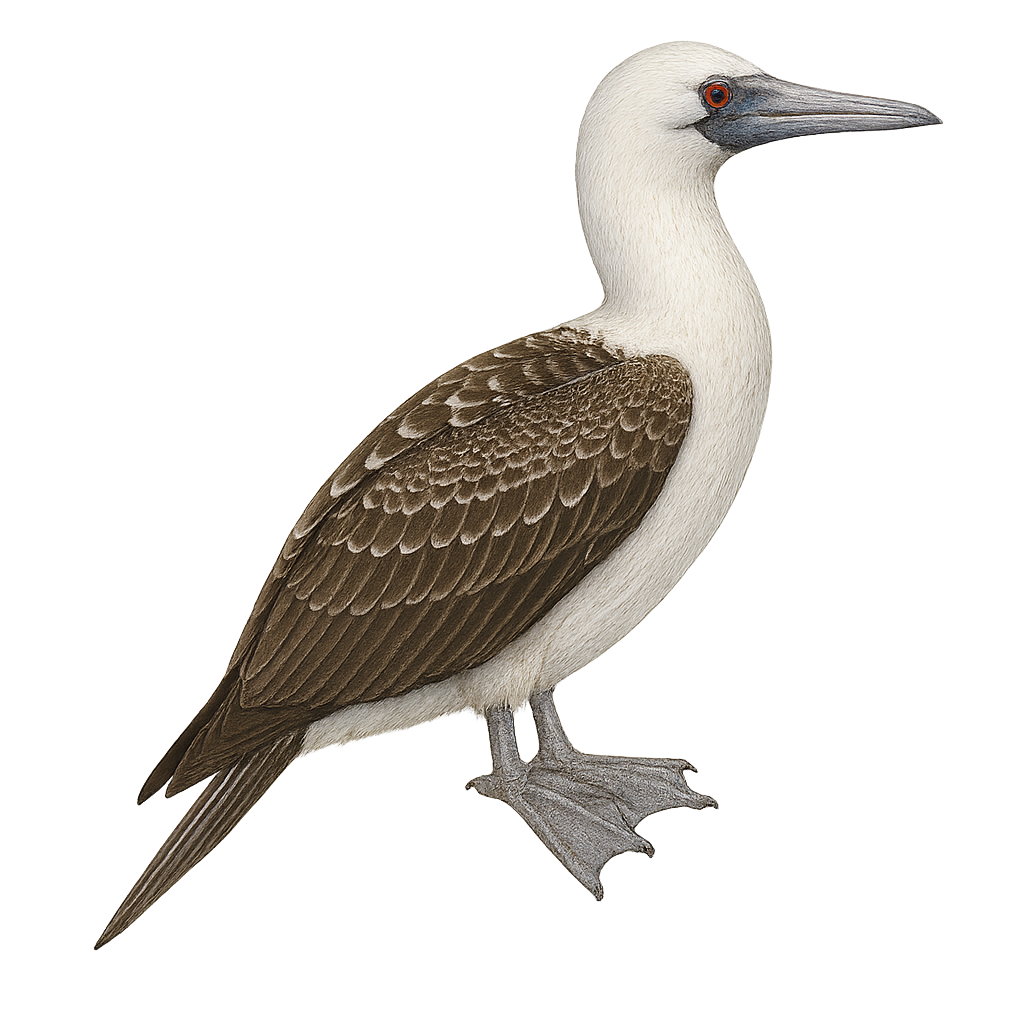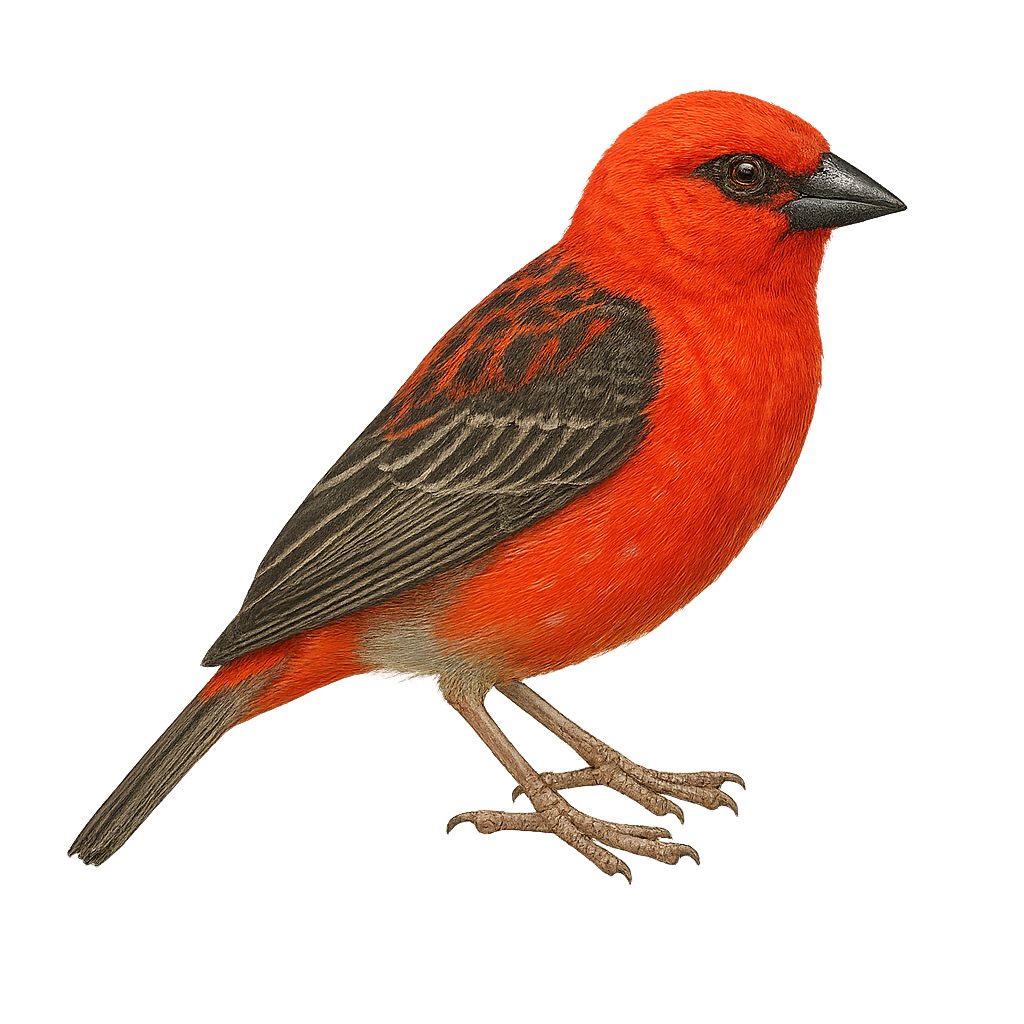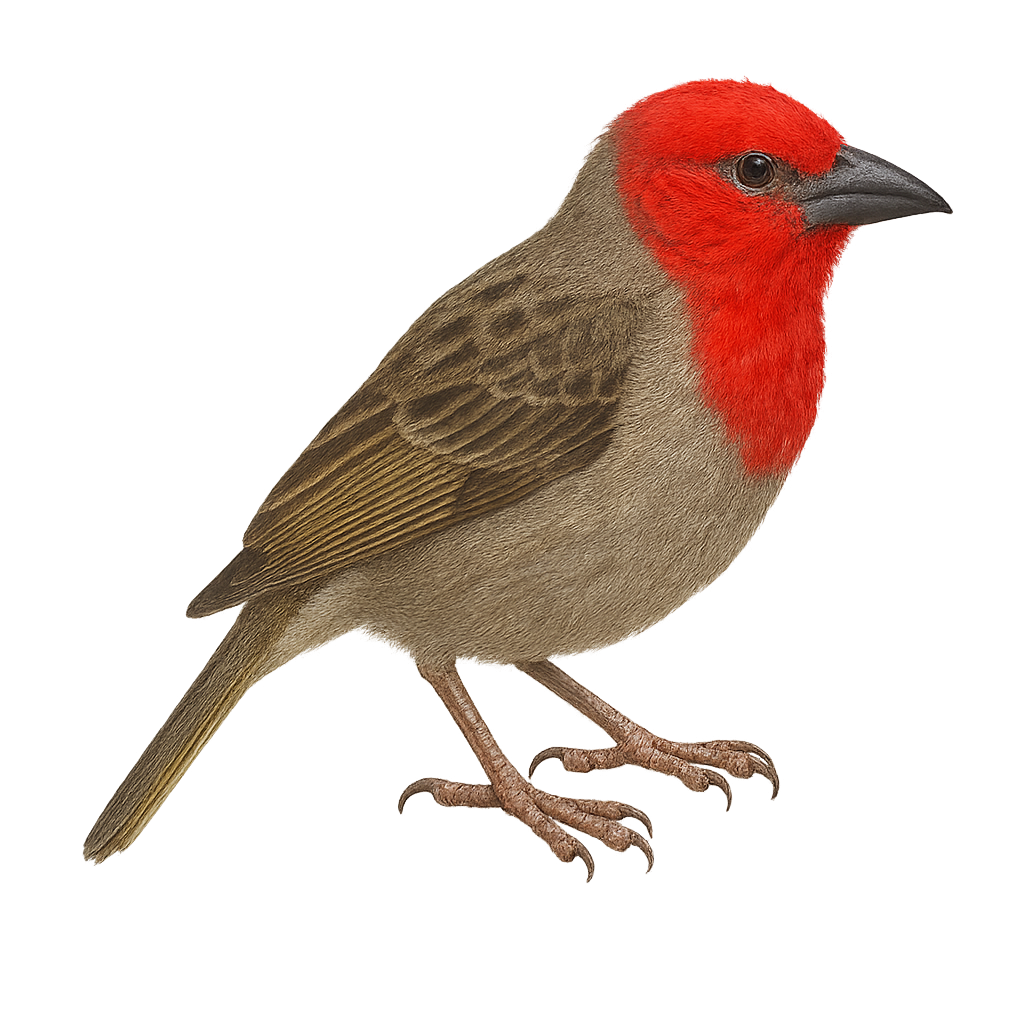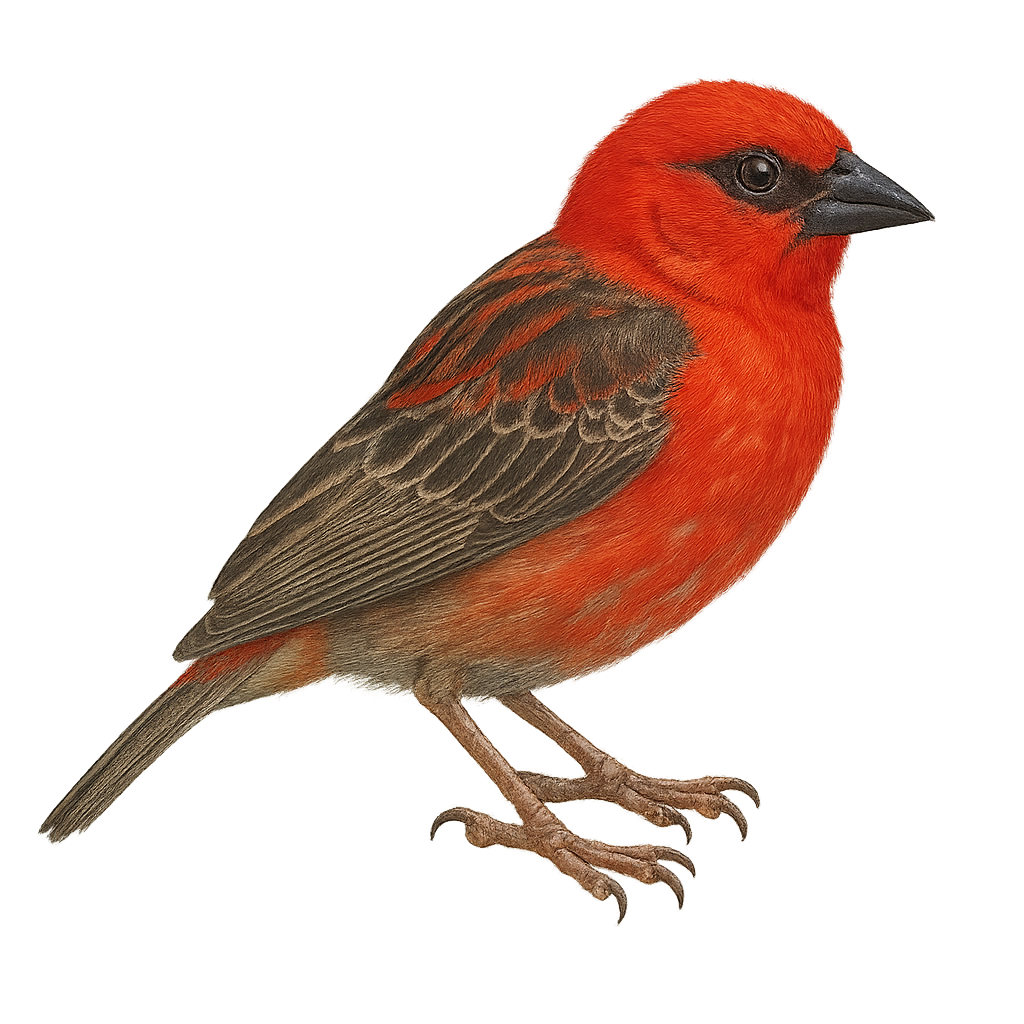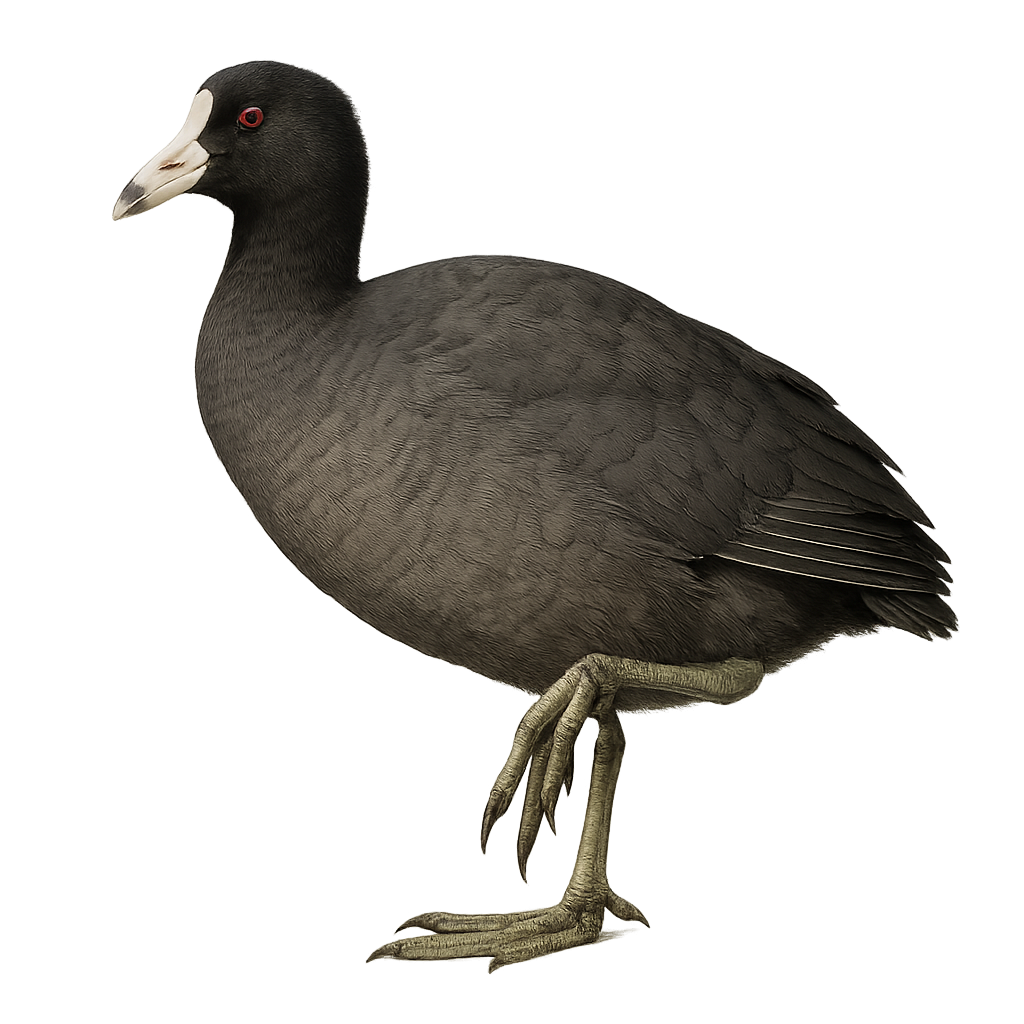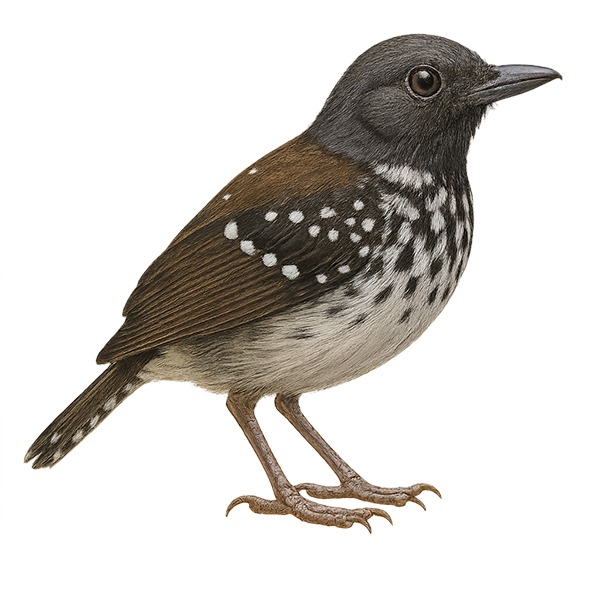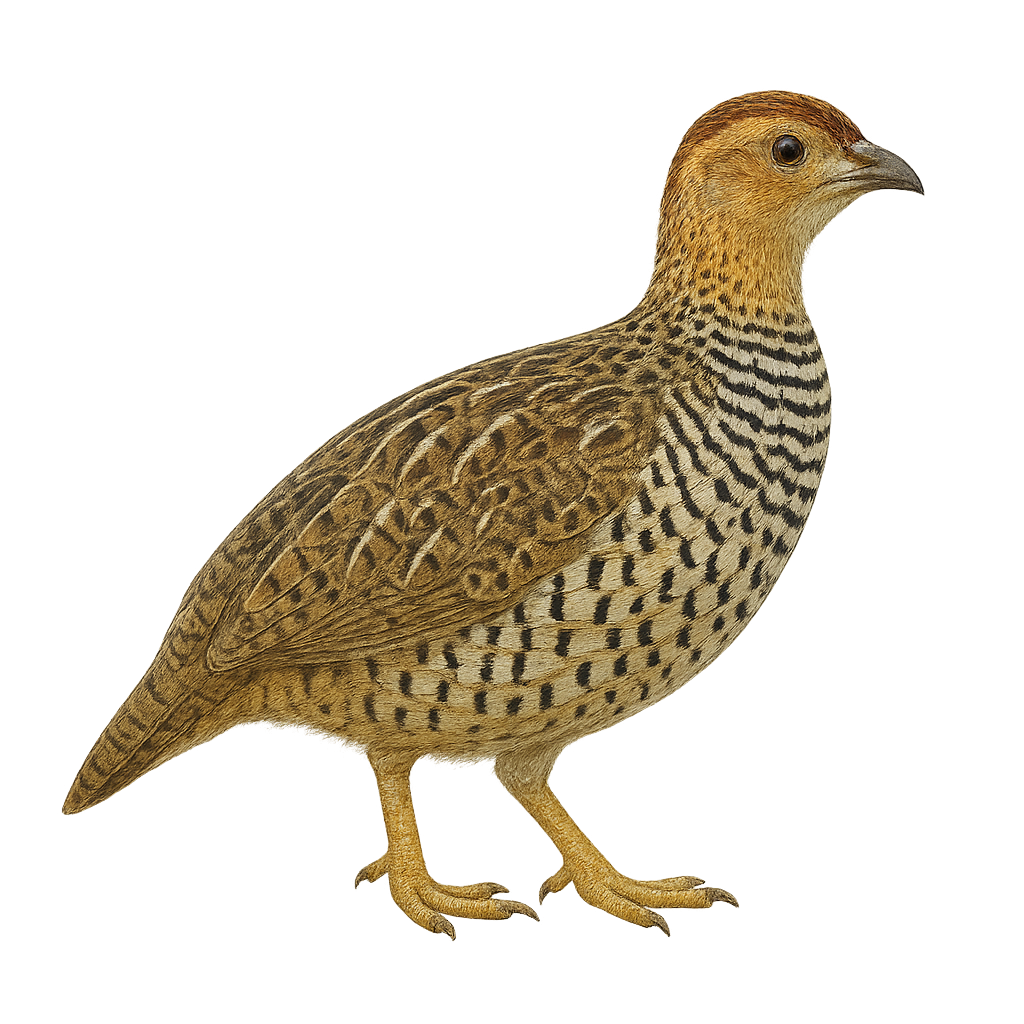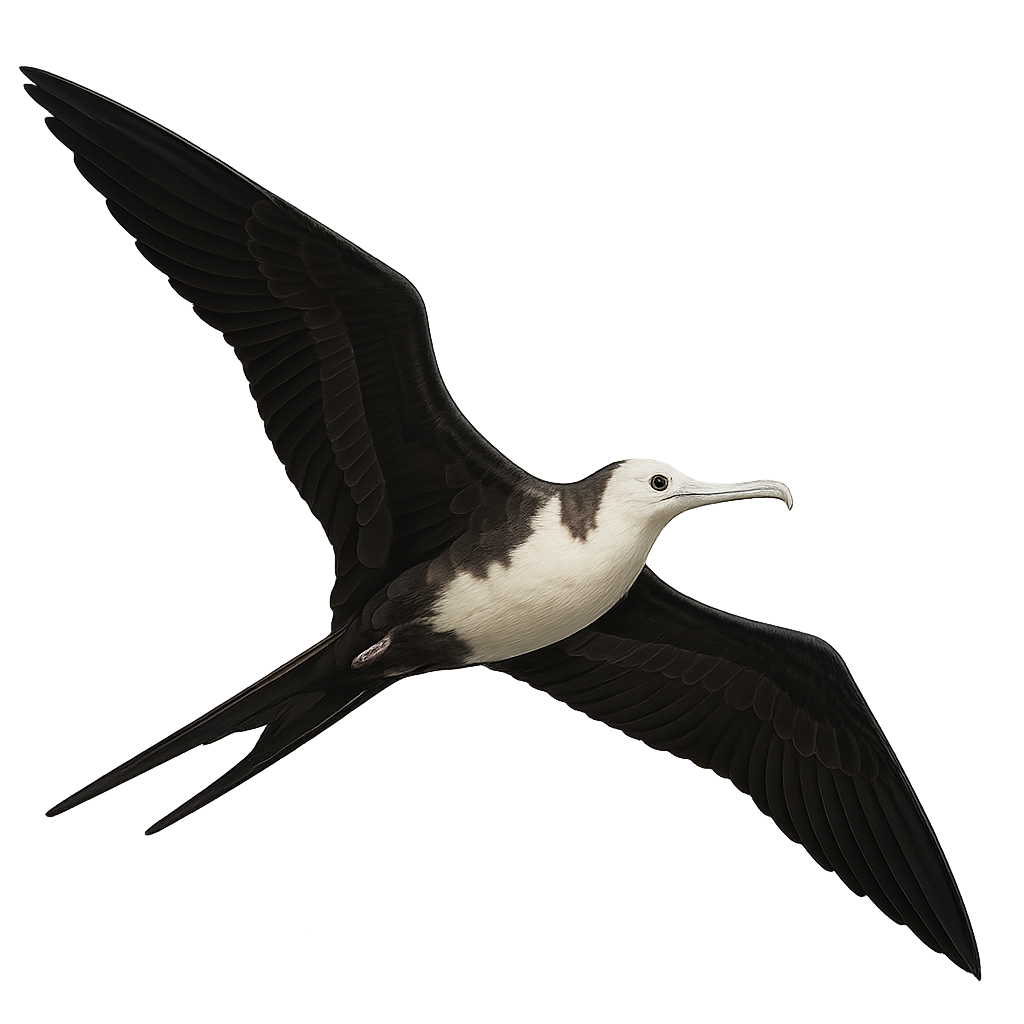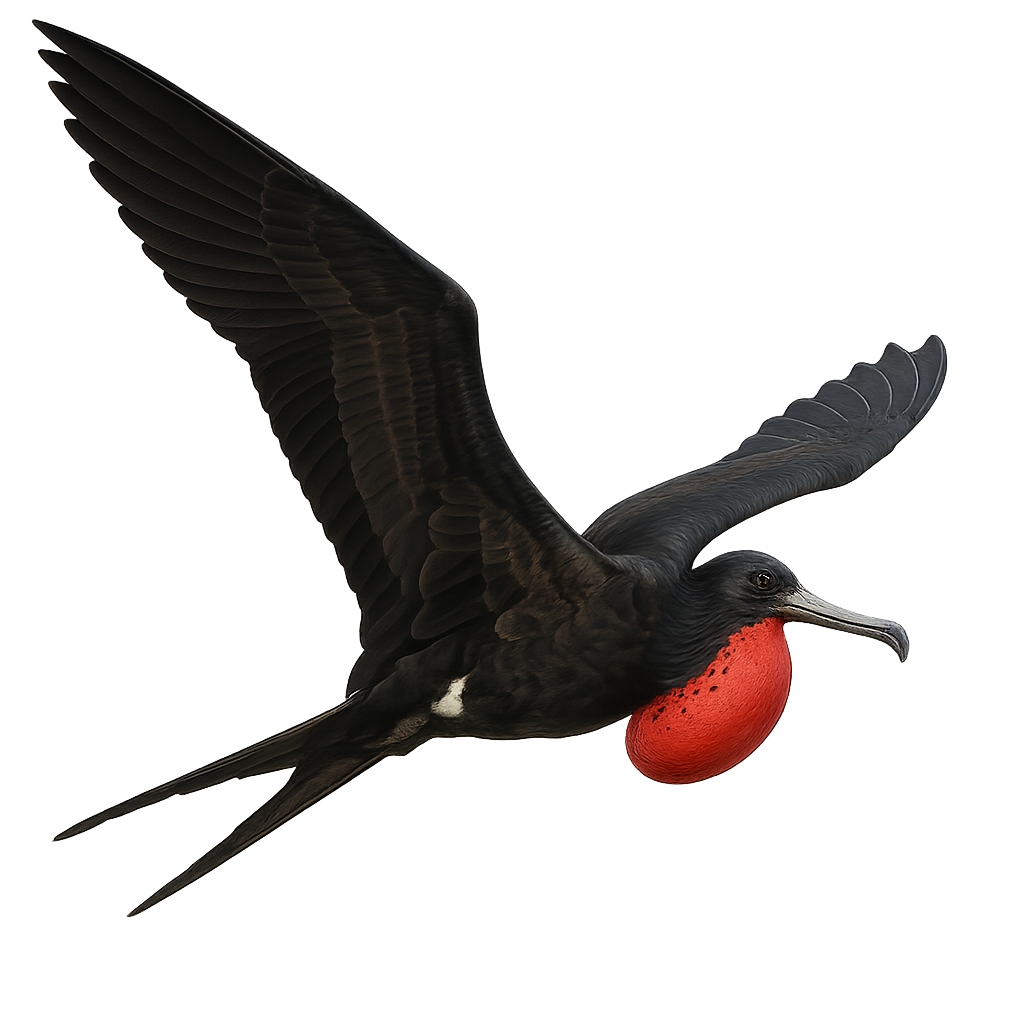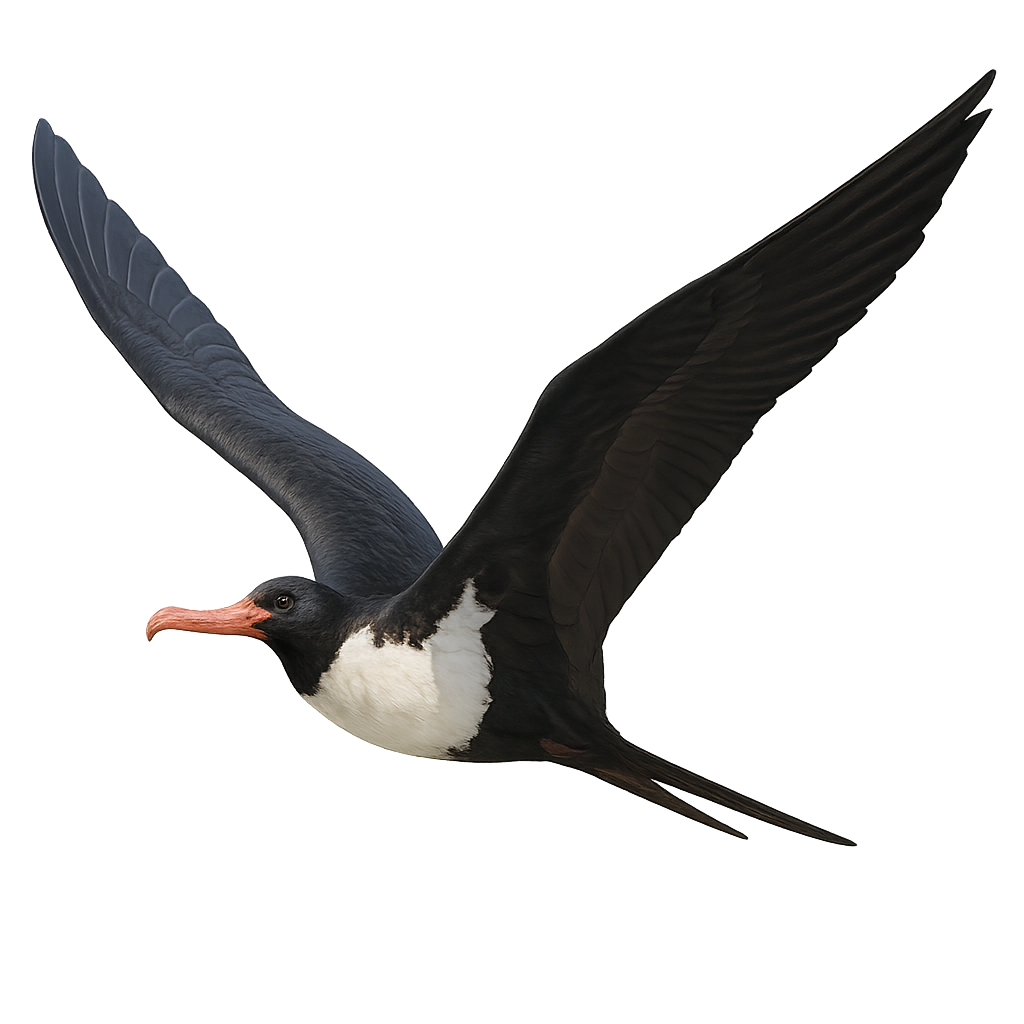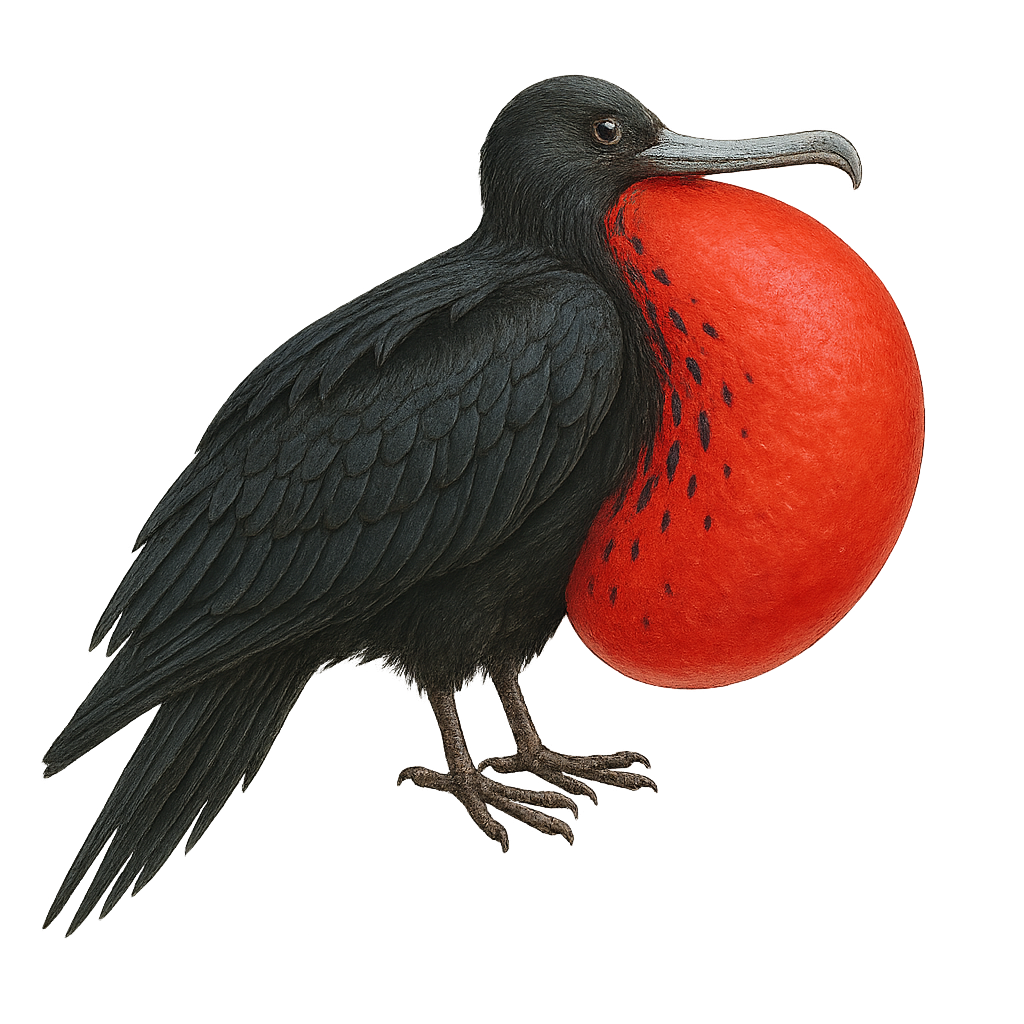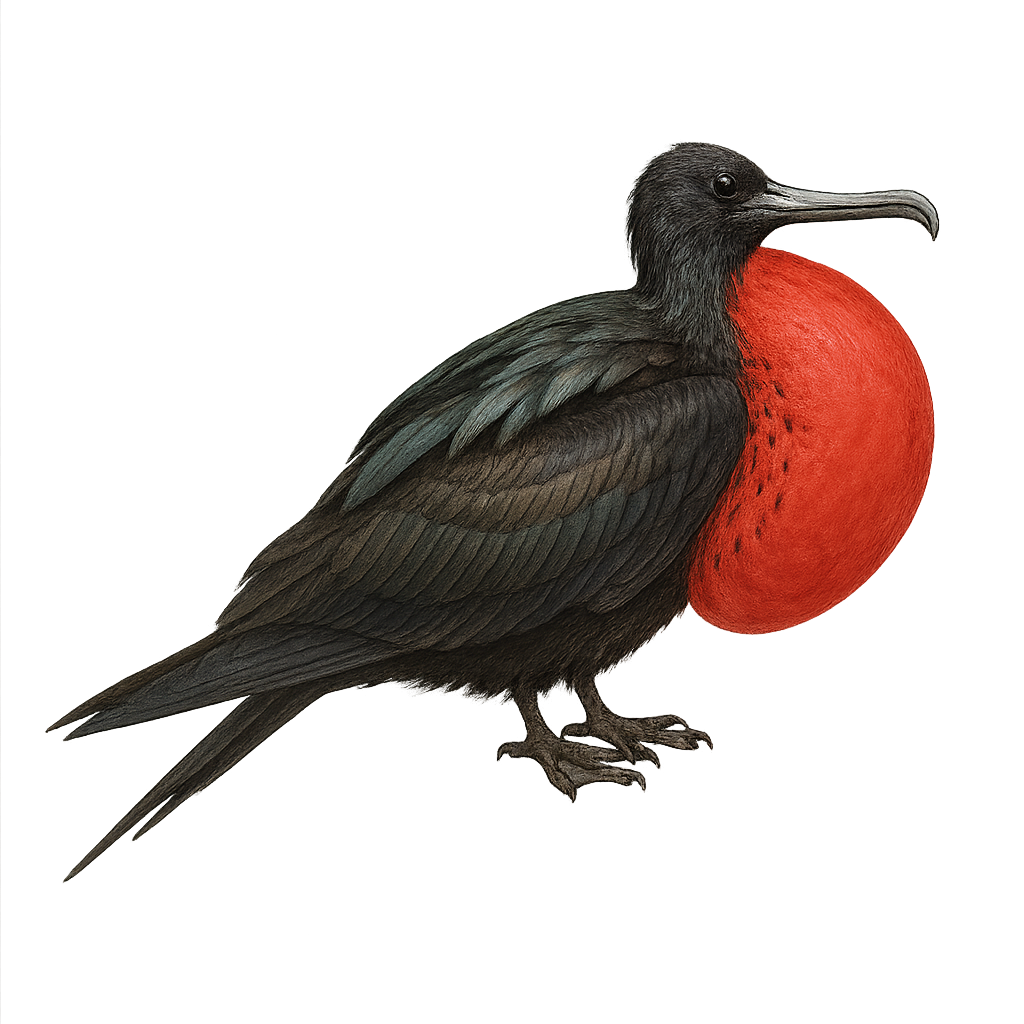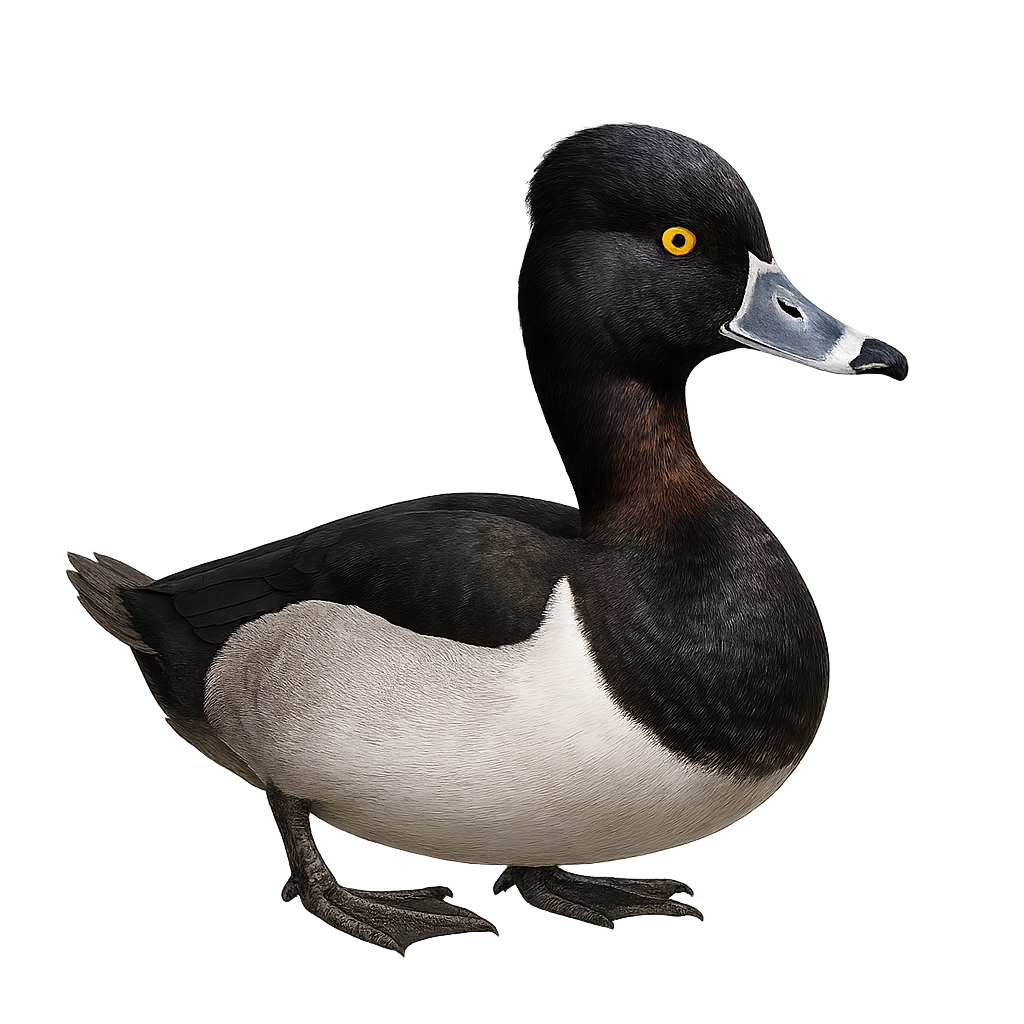The Chilean Flamingo, Phoenicopterus chilensis, is a graceful and elegant bird, easily recognizable by its pale pink plumage with brighter shades on the wings. It has a long, sinuous neck and slender legs that allow it to move easily in shallow waters. Its curved beak is adapted for filtering small shrimp and algae, which make up its diet. Found mainly in the wetlands of South America, particularly in Argentina, Chile, and Peru, this sociable bird lives in large colonies, providing protection against predators. The Chilean Flamingo is a fascinating species, both in appearance and in its complex social behaviors.
The Lesser Flamingo, Phoeniconaias minor, is a graceful and slender bird, primarily found in the alkaline lakes of East Africa and some regions of India. It is distinguished by its pale pink plumage, long and thin legs, and a dark red, curved beak. This flamingo is the smallest of its kind, standing about 80 to 90 cm tall. It lives in large colonies, often consisting of thousands of individuals, which helps protect it from predators. Its diet mainly consists of blue-green algae and small crustaceans, which it filters with its specialized beak. The Lesser Flamingo is a migratory bird, moving according to seasonal water level changes.
The Greater Flamingo is a large bird with distinctive plumage, easily recognizable by its vivid colors and graceful silhouette. It stands about 1.4 to 1.7 meters tall and weighs between 2.5 and 4 kg. Its plumage is primarily pale pink, with more intense shades on the wings, and its long legs and neck give it a majestic posture. The Flamingo's beak is curved downward, allowing it to filter water and feed primarily on plankton, small shrimp, and algae. This bird primarily inhabits wetlands, saline lagoons, and salt marshes, where it often gathers in large colonies. Flamingos feed by dipping their heads into the water while walking in shallow waters, using their beaks to filter food. While the species is not threatened, it faces risks related to habitat loss, pollution, and human disturbance.
The Fossa is a carnivorous predator endemic to Madagascar, a unique mix between a feline and a mongoose, with a sleek body and a long tail. It is the largest land predator on the island, primarily feeding on lemurs, but also small mammals, birds, and reptiles. The Fossa is particularly agile and capable of climbing, but it often prefers to hunt its prey on the ground. Although secretive and difficult to observe, it plays an important role in the ecosystem of Madagascar. The Fossa is endangered due to the loss of its natural habitat.
The Blue-footed Booby is a distinctive seabird known for its striking blue feet, primarily found along the Pacific coasts. They are most commonly seen on the Galápagos Islands, where they breed in colonies. Their courtship dance, where the male displays his vibrant feet to attract a mate, is captivating. They primarily feed on fish, diving with remarkable precision. Their plumage is mostly white with brown wings and tail. Juveniles have grey feet that turn blue as they mature. While often seen in groups, they can also be solitary when hunting.
The red-footed booby is a remarkable seabird, easily recognized by its red feet and its white and brown plumage. It primarily lives on tropical islands in the Pacific and Indian Oceans, where it nests on cliffs or trees near water. It feeds mainly on fish, which it catches by diving from heights. It is a social species living in colonies, but it faces threats due to habitat loss and human disturbances.
The Australasian Gannet, or Morus serrator, is a striking seabird known for its brilliant white plumage, black-tipped wings, and pale blue bill. It primarily inhabits the coasts of Australia and New Zealand. This bird is famous for its spectacular dives, reaching speeds of 100 km/h to catch fish. Australasian Gannets are social birds, often seen in large colonies on rocky islands. They nest on cliffs or islets, usually laying a single egg. Although they are quite tolerant of human presence, it's essential to respect their space to avoid disturbing their natural behavior.
The Brown Booby, Sula leucogaster, is a medium-sized seabird easily identified by its chocolate-brown plumage contrasted with a white belly. It has a strong, pointed beak, perfect for catching fish by diving from the air. Adults measure about 70 to 80 cm in length with a wingspan of 130 to 150 cm. They are often seen gliding over tropical and subtropical waters, feeding mainly on fish and squid. The Brown Booby is a gregarious bird, often seen in colonies on rocky islands where it nests. Its population is stable, although threats such as pollution and habitat disturbance can affect it locally.
The Abbott's Booby, or Papasula abbotti, is a rare and iconic seabird found in the Indian Ocean, particularly on Christmas Island. It is recognizable by its striking white plumage contrasted with black wings and tail, and it has a robust, slightly curved beak. Unusually for a booby, it nests primarily in the trees of the rainforest. Its population is declining due to deforestation and human disturbances. The Abbott's Booby feeds mainly on fish and squid, which it captures by skillfully diving into the ocean. Conservation efforts are crucial to maintaining the ecological balance of its island habitat.
The Northern Gannet is a large seabird, easily recognized by its brilliant white plumage and large black-tipped wings. It measures about 85 cm in length, with a wingspan of 170 to 180 cm, and weighs between 2.5 and 3.5 kg. Its long, pointed beak, along with its pale yellowish head, makes it a formidable predator in its marine environment. The Northern Gannet primarily inhabits the rocky coasts of the North Atlantic, where it nests in impressive colonies, often situated on steep cliffs. This bird is an excellent diver, catching its prey by plunging dramatically from heights of up to 30 meters, reaching speeds in excess of 100 km/h. Its diet mainly consists of fish, which it catches either in flight or by diving underwater. While the species is not endangered, it faces risks such as marine pollution, declining fish populations, and disturbances to its nesting sites.
The Nazca Booby is a striking seabird native to the Galápagos Islands, recognized for its bright white plumage contrasted by black wings and tail. It has a sturdy, pointed bill, often yellowish, ideal for catching fish and squid by diving skillfully into the ocean. This bird nests in dense colonies on cliffs and rocky islets, creating rudimentary nests on the ground. Pairs are monogamous and share parental duties, typically incubating two eggs. The chicks, covered in white down, rely on adults for food until they are ready to fledge.
The Brewster's Booby, or Sula brewsteri, is a medium-sized seabird belonging to the Sulidae family. It is characterized by its bright white plumage, black wings and tail, and pale blue bill. Mainly found in the Gulf of California and along the Pacific coasts of Mexico, this bird is an excellent diver, feeding primarily on fish and squid. It nests in colonies on rocky islands, usually laying two eggs. The young are fed by regurgitation by both parents. Although its conservation status is currently of concern, it is vulnerable to human disturbances and climate changes affecting its nesting habitats.
The Cape Gannet, or Morus capensis, is a striking seabird native to the southern African coasts. With its bright white plumage, vivid yellow head, and piercing blue eyes, it is a captivating sight in flight, boasting long, slender wings. An exceptional diver, it feeds primarily on fish, which it catches by plunging at high speed into the ocean. Cape Gannet colonies are often noisy and lively, providing an impressive visual and auditory spectacle. They nest in large colonies on rocky islands, building rudimentary nests from various materials. Although their population is stable, they are vulnerable to environmental changes and overfishing, which can impact their food supply.
The Sula dactylatra, commonly known as the Masked Booby, is a large seabird recognized for its striking white plumage and distinctive black facial mask. Its long, slender wings allow it to glide over vast ocean expanses. It primarily feeds on fish and squid, which it catches by diving from the air. Often seen in colonies on tropical and subtropical islands, it nests on the ground. The Masked Booby is an adept diver, capable of plunging to impressive depths to catch its prey. Despite its name, it is its relatives, the Blue-footed Boobies, that have the colorful feet.
The Peruvian Booby, or Sula variegata, is a medium-sized seabird primarily found along the coasts of Peru and Chile. It is characterized by its striking black and white plumage, pale blue bill, and gray feet. This bird is an exceptional diver, capable of plunging to impressive depths to catch fish and cephalopods, its main food source. Peruvian Boobies nest in large colonies on islands and coastal cliffs, where they build rudimentary nests on the ground. Their breeding period is closely linked to food availability, influenced by the Humboldt Current. Although their population is currently stable, they remain vulnerable to environmental changes and overfishing.
The Forest Fody, or Foudia omissa, is a small bird endemic to Madagascar. It is primarily recognizable by its bright red plumage in males, while females display more subdued shades of brown and gray. This passerine is mainly found in the island's humid forests, where it feeds on seeds, insects, and small fruits. The Forest Fody is a sociable bird, often seen in small groups. Its breeding season coincides with the rainy season, providing an abundance of food for the young. Although relatively common, deforestation poses a threat to its natural habitat.
The Mayotte Fody, or Foudia eminentissima, is a small bird endemic to the island of Mayotte in the Comoros archipelago. This passerine is notable for its bright red plumage in males, while females display more subdued shades of brown and gray. Measuring about 12 to 14 cm, it is often seen in forests, gardens, and cultivated areas. Its diet mainly consists of seeds, fruits, and insects. The Mayotte Fody is a social bird, often seen in small groups, and plays a crucial role in pollinating certain local plants. Although its habitat is limited, it adapts well to human-modified environments.
The Red Fody, or Foudia madagascariensis, is a small bird endemic to Madagascar, renowned for its striking plumage. Males display a vivid red color on the head and chest, contrasting with brownish wings and back, while females and juveniles are duller, with brownish hues and streaks. This bird measures about 15 cm in length and weighs between 14 and 19 grams. It is often seen in forests, agricultural areas, and even urban gardens. The Red Fody is a sociable bird, living in small groups, and primarily feeds on seeds, insects, and fruits. Its adaptability to various habitats makes it a resilient species, although it is sometimes threatened by the loss of its natural habitat.
The Beech Marten is a small carnivorous mammal belonging to the mustelid family. It measures between 40 and 50 cm in length, with a tail that can reach up to 30 cm, and typically weighs between 1.5 and 2 kg. Its fur is dense and smooth, typically brown in color, with a lighter belly and a distinctive white patch on the throat. The Beech Marten is agile and opportunistic, primarily hunting small mammals, birds, eggs, as well as fruits and insects. It is mainly nocturnal and solitary, but can be observed in a wide variety of habitats, including forests, orchards, and even urban areas. It is known for its ability to climb trees and enter attics and lofts of human dwellings. While the Beech Marten is relatively common in Europe, it faces threats related to habitat loss and human activities, such as road traffic and deforestation.
The American Coot is a medium-sized waterbird, easily identified by its slate-gray plumage and distinctive white bill, often marked with a red spot at the base. It inhabits lakes, ponds, and marshes across North America, feeding primarily on aquatic vegetation, insects, and small fish. Although often mistaken for a duck, it belongs to the rail family. It has strong legs and long lobed toes that enable it to swim and walk on floating vegetation. The American Coot is known for its territorial behavior, especially during the breeding season, when it vigorously defends its territory against intruders.
The common moorhen is an aquatic bird easily recognized by its black plumage, bright red beak, and white frontal shield. It is primarily found in wetlands, lakes, and marshes across Europe, Asia, and North Africa. The common moorhen is omnivorous, feeding on aquatic plants, insects, and small fish. It is also known for its territorial behavior and quick flights when disturbed.
The Spot-backed Antbird is a small bird from the Thamnophilidae family, primarily found in the humid tropical forests of South America. It is recognizable by its brown plumage with distinctive white spots on its back and wings. This bird is often seen in pairs or small groups, moving through the underbrush in search of insects and other small invertebrates. Known for its melodious and repetitive song, it resonates throughout the forest. Although relatively discreet, it can be spotted thanks to its characteristic calls. The Spot-backed Antbird plays an important role in the forest ecosystem by controlling insect populations and participating in seed dispersal.
The Coqui Francolin is a medium-sized terrestrial bird belonging to the Phasianidae family. It is primarily found in sub-Saharan Africa, frequenting savannas and open grasslands. This francolin is recognizable by its speckled brown plumage, which allows it to blend effectively into its natural environment. It has a relatively small head with a black cap and white cheeks. Males and females are similar, although males are slightly larger. The Coqui Francolin is a social bird, often seen in small groups. It primarily feeds on seeds, insects, and small invertebrates. Its breeding period varies by region but is generally linked to the rainy season when food is abundant.
The Nahan's Francolin, or Francolinus nahani, is a shy and elusive bird native to the dense tropical forests of Central Africa, particularly in the Democratic Republic of the Congo and Uganda. It is characterized by its speckled brown plumage, reddish head, and black bill. Preferring dense undergrowth, it feeds mainly on seeds, insects, and small invertebrates. Although its behavior is not well-documented, it is generally considered shy and difficult to spot. Its population is declining due to deforestation and hunting, making it vulnerable. Conservation efforts are essential to ensure its long-term survival.
The Ascension Frigatebird, scientifically known as Fregata aquila, is an impressive seabird renowned for its ability to fly long distances without landing. It boasts a wingspan of up to 2.3 meters, allowing it to effortlessly glide over oceans. Its plumage is predominantly black with metallic sheen, and males display a bright red gular pouch that they inflate to attract females. These birds primarily nest on Ascension Island, where they form large colonies. They mainly feed on fish and squid, which they skillfully snatch from the water. Their lifestyle is closely tied to ocean currents and climatic conditions, making them vulnerable to environmental changes.
The Lesser Frigatebird is a striking seabird known for its sleek silhouette and long, scythe-shaped wings. It is primarily black with a white belly in males, while females have a white breast band. This bird is renowned for its graceful flight and ability to soar long distances effortlessly. Lesser Frigatebirds feed mainly on fish and squid, which they catch at the water's surface. They are also known for their kleptoparasitic behavior, stealing food from other seabirds. They nest in colonies on tropical islands, building rudimentary nests in trees or shrubs.
The Christmas Island Frigatebird, or Fregata andrewsi, is a seabird endemic to Christmas Island in the Indian Ocean. This majestic bird is recognizable by its glossy black plumage and slender silhouette. Males display a bright red gular pouch, which they inflate to attract females. Frigatebirds are expert gliders, capable of flying long distances without flapping their wings. They primarily feed on fish and squid, which they catch at the water's surface. Unfortunately, this species is critically endangered, mainly due to habitat loss and human disturbances. Conserving their natural habitat is crucial for their long-term survival.
The Great Frigatebird, or Fregata minor, is an impressive seabird known for its large size and wingspan, which can reach up to 2.3 meters. This large black bird is easily recognizable by its slender silhouette and hooked beak. Males display a bright red gular pouch that they inflate to attract females. Frigatebirds are masters of flight, capable of staying aloft for several days thanks to their long, slender wings. They primarily feed on fish and squid, which they catch in flight or by harassing other birds to steal their prey. They are mainly found in the tropical and subtropical regions of the Pacific and Indian Oceans.
The magnificent frigatebird is an impressive seabird, recognizable by its slender silhouette and long, sickle-shaped wings. Males display a bright red gular pouch, which they inflate to attract females. These birds are primarily black with metallic sheens, and females are distinguished by a white breast. They are often seen soaring above tropical oceans, using air currents to move effortlessly. Frigatebirds do not swim and cannot take off from water, so they feed by catching flying fish or harassing other birds to steal their prey. Their wingspan can reach up to 2.3 meters, making them masters of gliding flight.
The Ring-necked Duck, Aythya collaris, is a medium-sized diving duck known for its distinctive neck ring. Males display a striking black and gray plumage with a blue-gray bill marked by a white band, while females are browner with a white eye ring. They inhabit lakes and ponds across North America, feeding on aquatic plants, seeds, and invertebrates. Their flight is swift and direct, often in small flocks. Although generally wary, they can become accustomed to human presence in protected areas. Their population is stable, but habitat loss remains a potential threat.


